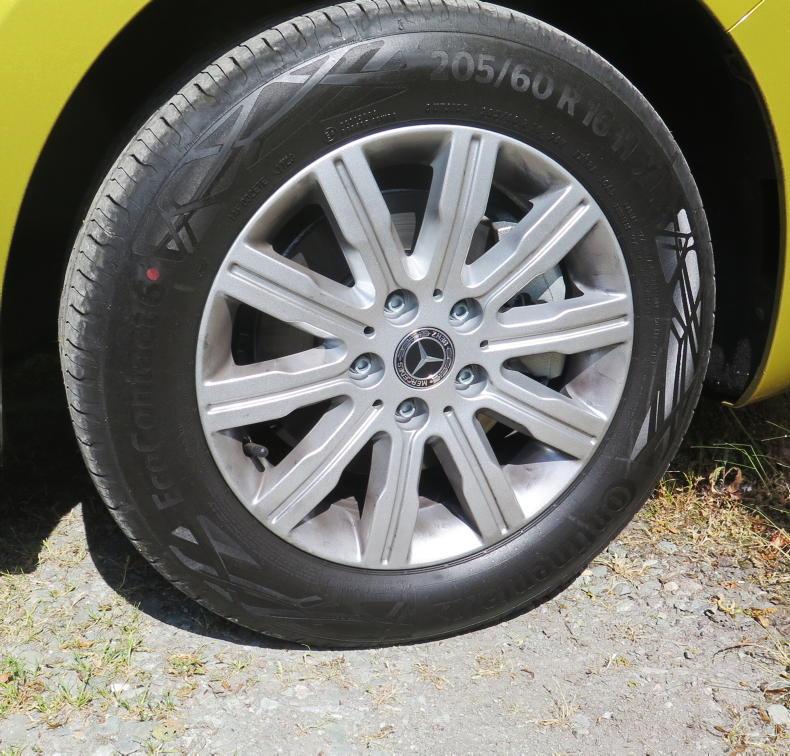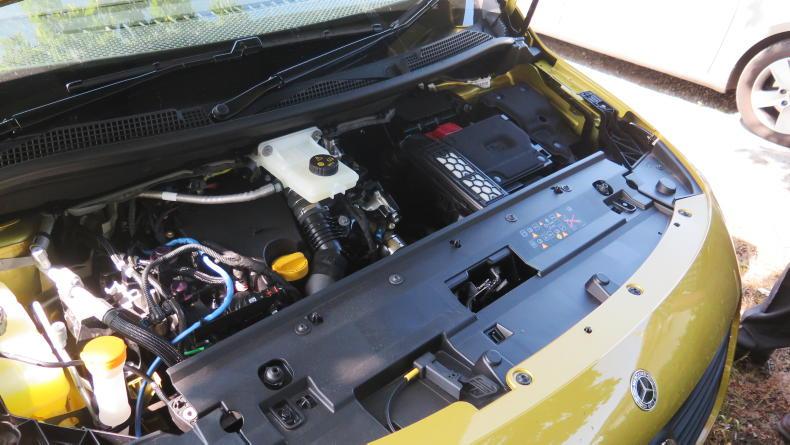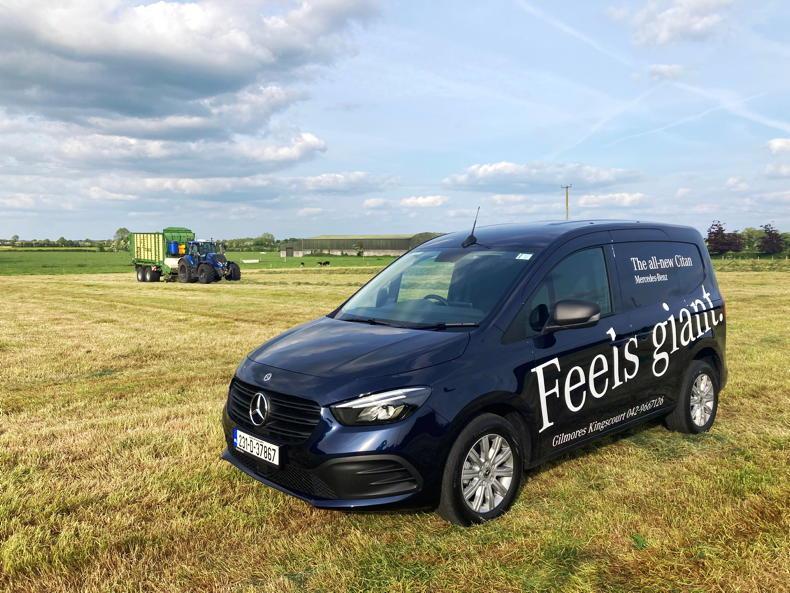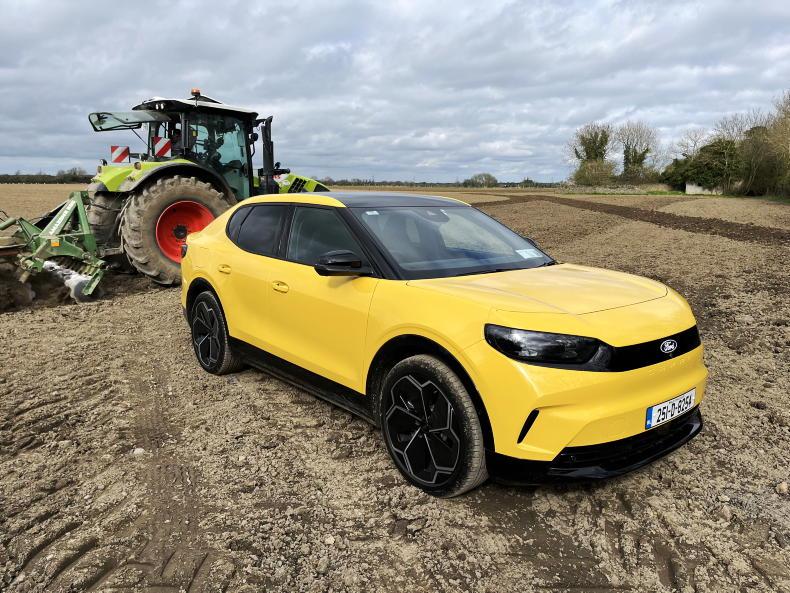The small van market is booming, reflecting the strength of the Irish business economy. That has prompted Mercedes-Benz, one of the big car, van and truck brand names, to enter the Irish small van market for 2023.
The Mercedes-Benz Citan van has been around but not in numbers in Ireland. Its appearance has been mainly through the secondhand imports’ channels. Across Europe, the first-generation Citan was part of a Mercedes-Benz and Renault collaboration. To confirm that link, they shared the European Van of the Year Award for 2022 for these new-generation vans.
Now, that collaboration continues and the new second-generation Citan has some obvious styling similarities to the updated version of the Renault Kangoo, which has been a popular van on the Irish market. The overall appearance of the van is more modern, and the range of features offered now makes it an attractive option.
Mercedes-Benz has created its own style for the Citan from the prominent three-star badge on the front to the interior styling of the dash area. There will be a price difference between it and the Renault offering, but will it be enough to shift small van buyers in the Mercedes-Benz direction?
Taking the van to the road provides a good test of its comfort and abilities. The test version came with the seven-speed automatic gearbox that makes for easier driving. Mercedes-Benz is offering two engine and two styling versions of the new Citan van. The Citan Pro is the entry-level van with noticeable steel wheels, while driving features are impressive.
These include a multifunction steering wheel and a smartphone package that allows you to quickly get comfortable in the van. It also comes with air conditioning coupled with heat insulating glass for driver comfort and that was needed in recent weeks.
Useful features include reversing camera and hill start assist to help get you out of tight starting spots, while the Mercedes-Benz MBUX multimedia system is part of the package. This is a similar infotainment system that is widely fitted in the Mercedes-Benz range of cars.
The controls for the MBUX are similar across most Mercedes-Benz models and that same holds true for the Citan van. The van drivers are included when it comes to Mercedes-Benz features and that enhances the driving experience.
Mercedes-Benz are pitching this Citan more at the owner operators and smaller businesses than selling to the bigger van fleets. They believe that these extra features, along with the badge on the front grille, will be what will encourage new buyers.
There are practical sides to the new Citan. It is powered by a Renault-built 1.5-litre turbo-diesel engine that’s lively and economical. There are two power options, either 95bhp or 116bhp and they differ mainly in terms of acceleration, rather than fuel economy.

The test van came on Continental 205/60R16 tyres and alloy wheels, while the entry models come on steel wheels.
The official economy rating is 5.6l/100km or 17.9km/litre and that converts to a driving range of over 950km from a full 54-litre tank of diesel. I found that during my test drive of almost 800km, the actual Citan economy figure was only marginally less. This is thrifty van to own.
Rural van drivers need towing ability and the Citan is a match for the competition in this 90bhp to 100bhp power band with a towing rating of 1,500kg with a braked trailer. Towing rating does not change with the engine power.
The combined gross weight of the van is rated at 3,500kg, which included van (weighing 1,595kg), its load and a trailer load.
The standard van comes with a single sliding door and two rear doors. The van is designed to take two Euro pallets given its load length of 1,806mm.
Side door
Access through the side door is good and the van comes with a solid bulkhead to both protect and isolate the driver from too much noise.
Bulkhead positioning is often an issue with smaller vans. It slopes backwards at the head height area for more comfort in the Citan. The bulkhead position can restrict seat movement in a rearward way, often “needed” by sleeping passengers after a long working day.
This new Citan comes with good safety credentials having secured a five-star euro NCAP safety rating. That’s helped by the fact that it comes with six airbags, a ‘fatigue-warning’ Attention Assist system and electronic stability control.

The dash layout is very much in line with the Mercedes-Benz car designs including the use of the MBUX infotainment system. There is a nice feel to the controls including the multi-function steering wheel, even on the entry level Citan van models.
Other features imported from the Mercedes-Benz passenger car range include the crosswind assist and active brake assist.
I’ve driven both versions of the new Citan, in terms of engine power and gearbox options. The automatic gearbox is the preferred choice while accepting a €2,000 more price tag.
There is a difference in terms of engine power and that’s experienced by better acceleration in the higher-power 116bhp version. There is a €1,000 price step up for the higher power Pro+ versions and that’s more acceptable, but it won’t deliver anything more in terms of towing ability while giving just an extra 5kg payload capacity in the manual versions.
There is about a €2,000 price difference between the Citan and the latest Renault Kangoo vans that’s related to some of the Mercedes-Benz features and, of course, the branding. That’s on paper. I expect that some deals will be done, and like many of us, that badge seem to count for something when it comes to the clothes we wear, so why would it not impact on our choice of van?
The entry price starts at €28,591 including VAT or £25,270 in Northern Ireland, including VAT and that’s a €2,000 premium over the Renault offering. Some of that premium may be justified in a practical sense, the other bit relates to brand.
This van is relatively new on the market, so it is difficult to establish a three-year ownership cost.

The entry-level new Mercedes-Benz Citan is powered by a Renault-built 1.5-litre turbo-diesel engine that delivers 95bhp and is economical.
Based on average figures, depreciation being the biggest, I would estimate that small van ownership costs are in the region of 25% lower than the ownership costs associated with 4x4s on many Irish farms.
Engine: 1.50-litre turbo diesel.
Engine power: 95bhp.
Engine torque: 260Nm.
0 – 100km/hr: 13.6 seconds.
Economy: 5.6l/100km or 17.9km/litre.
CO2 rating: 140g/km.
Fuel tank capacity: 54 litres.
Road tax annual: €333 taxed as commercial.
Main service: 12 months.
Euro NCAP rating: five-star (2022).
Load area dimensions LxW (mm): 1806 x 1524.
Towing capacity: 1.5 tonnes.
Payload: 635kg.
Warranty: three years or 100,000km.
Entry price: €28,591 incl VAT.
Entry price NI: £25,270 incl VAT.
The small van market is booming, reflecting the strength of the Irish business economy. That has prompted Mercedes-Benz, one of the big car, van and truck brand names, to enter the Irish small van market for 2023.
The Mercedes-Benz Citan van has been around but not in numbers in Ireland. Its appearance has been mainly through the secondhand imports’ channels. Across Europe, the first-generation Citan was part of a Mercedes-Benz and Renault collaboration. To confirm that link, they shared the European Van of the Year Award for 2022 for these new-generation vans.
Now, that collaboration continues and the new second-generation Citan has some obvious styling similarities to the updated version of the Renault Kangoo, which has been a popular van on the Irish market. The overall appearance of the van is more modern, and the range of features offered now makes it an attractive option.
Mercedes-Benz has created its own style for the Citan from the prominent three-star badge on the front to the interior styling of the dash area. There will be a price difference between it and the Renault offering, but will it be enough to shift small van buyers in the Mercedes-Benz direction?
Taking the van to the road provides a good test of its comfort and abilities. The test version came with the seven-speed automatic gearbox that makes for easier driving. Mercedes-Benz is offering two engine and two styling versions of the new Citan van. The Citan Pro is the entry-level van with noticeable steel wheels, while driving features are impressive.
These include a multifunction steering wheel and a smartphone package that allows you to quickly get comfortable in the van. It also comes with air conditioning coupled with heat insulating glass for driver comfort and that was needed in recent weeks.
Useful features include reversing camera and hill start assist to help get you out of tight starting spots, while the Mercedes-Benz MBUX multimedia system is part of the package. This is a similar infotainment system that is widely fitted in the Mercedes-Benz range of cars.
The controls for the MBUX are similar across most Mercedes-Benz models and that same holds true for the Citan van. The van drivers are included when it comes to Mercedes-Benz features and that enhances the driving experience.
Mercedes-Benz are pitching this Citan more at the owner operators and smaller businesses than selling to the bigger van fleets. They believe that these extra features, along with the badge on the front grille, will be what will encourage new buyers.
There are practical sides to the new Citan. It is powered by a Renault-built 1.5-litre turbo-diesel engine that’s lively and economical. There are two power options, either 95bhp or 116bhp and they differ mainly in terms of acceleration, rather than fuel economy.

The test van came on Continental 205/60R16 tyres and alloy wheels, while the entry models come on steel wheels.
The official economy rating is 5.6l/100km or 17.9km/litre and that converts to a driving range of over 950km from a full 54-litre tank of diesel. I found that during my test drive of almost 800km, the actual Citan economy figure was only marginally less. This is thrifty van to own.
Rural van drivers need towing ability and the Citan is a match for the competition in this 90bhp to 100bhp power band with a towing rating of 1,500kg with a braked trailer. Towing rating does not change with the engine power.
The combined gross weight of the van is rated at 3,500kg, which included van (weighing 1,595kg), its load and a trailer load.
The standard van comes with a single sliding door and two rear doors. The van is designed to take two Euro pallets given its load length of 1,806mm.
Side door
Access through the side door is good and the van comes with a solid bulkhead to both protect and isolate the driver from too much noise.
Bulkhead positioning is often an issue with smaller vans. It slopes backwards at the head height area for more comfort in the Citan. The bulkhead position can restrict seat movement in a rearward way, often “needed” by sleeping passengers after a long working day.
This new Citan comes with good safety credentials having secured a five-star euro NCAP safety rating. That’s helped by the fact that it comes with six airbags, a ‘fatigue-warning’ Attention Assist system and electronic stability control.

The dash layout is very much in line with the Mercedes-Benz car designs including the use of the MBUX infotainment system. There is a nice feel to the controls including the multi-function steering wheel, even on the entry level Citan van models.
Other features imported from the Mercedes-Benz passenger car range include the crosswind assist and active brake assist.
I’ve driven both versions of the new Citan, in terms of engine power and gearbox options. The automatic gearbox is the preferred choice while accepting a €2,000 more price tag.
There is a difference in terms of engine power and that’s experienced by better acceleration in the higher-power 116bhp version. There is a €1,000 price step up for the higher power Pro+ versions and that’s more acceptable, but it won’t deliver anything more in terms of towing ability while giving just an extra 5kg payload capacity in the manual versions.
There is about a €2,000 price difference between the Citan and the latest Renault Kangoo vans that’s related to some of the Mercedes-Benz features and, of course, the branding. That’s on paper. I expect that some deals will be done, and like many of us, that badge seem to count for something when it comes to the clothes we wear, so why would it not impact on our choice of van?
The entry price starts at €28,591 including VAT or £25,270 in Northern Ireland, including VAT and that’s a €2,000 premium over the Renault offering. Some of that premium may be justified in a practical sense, the other bit relates to brand.
This van is relatively new on the market, so it is difficult to establish a three-year ownership cost.

The entry-level new Mercedes-Benz Citan is powered by a Renault-built 1.5-litre turbo-diesel engine that delivers 95bhp and is economical.
Based on average figures, depreciation being the biggest, I would estimate that small van ownership costs are in the region of 25% lower than the ownership costs associated with 4x4s on many Irish farms.
Engine: 1.50-litre turbo diesel.
Engine power: 95bhp.
Engine torque: 260Nm.
0 – 100km/hr: 13.6 seconds.
Economy: 5.6l/100km or 17.9km/litre.
CO2 rating: 140g/km.
Fuel tank capacity: 54 litres.
Road tax annual: €333 taxed as commercial.
Main service: 12 months.
Euro NCAP rating: five-star (2022).
Load area dimensions LxW (mm): 1806 x 1524.
Towing capacity: 1.5 tonnes.
Payload: 635kg.
Warranty: three years or 100,000km.
Entry price: €28,591 incl VAT.
Entry price NI: £25,270 incl VAT.












SHARING OPTIONS